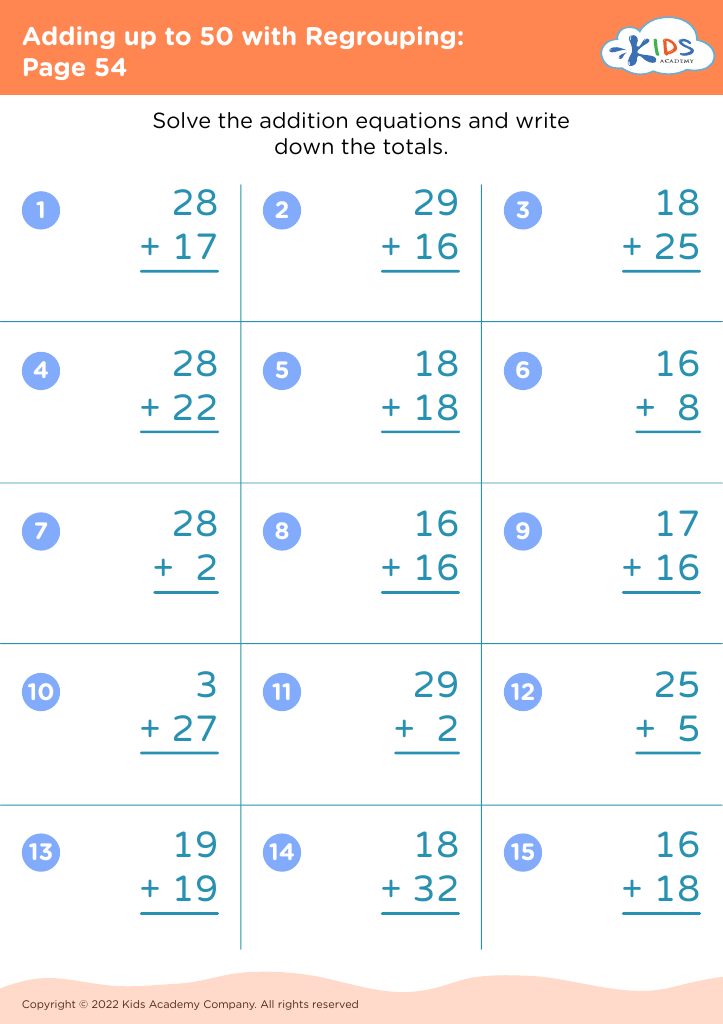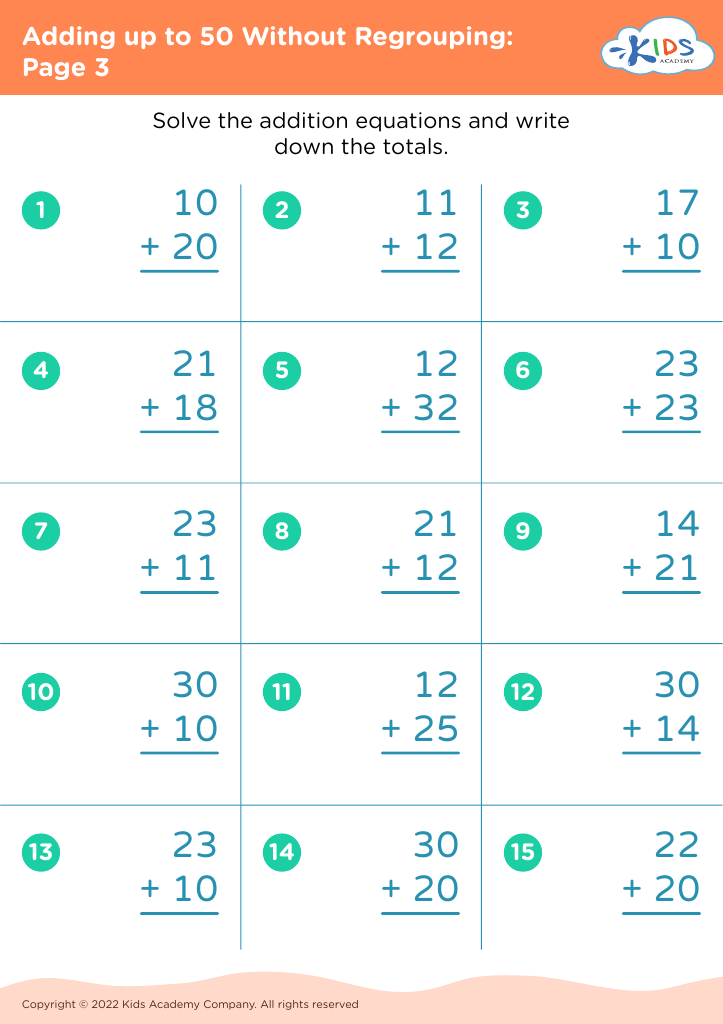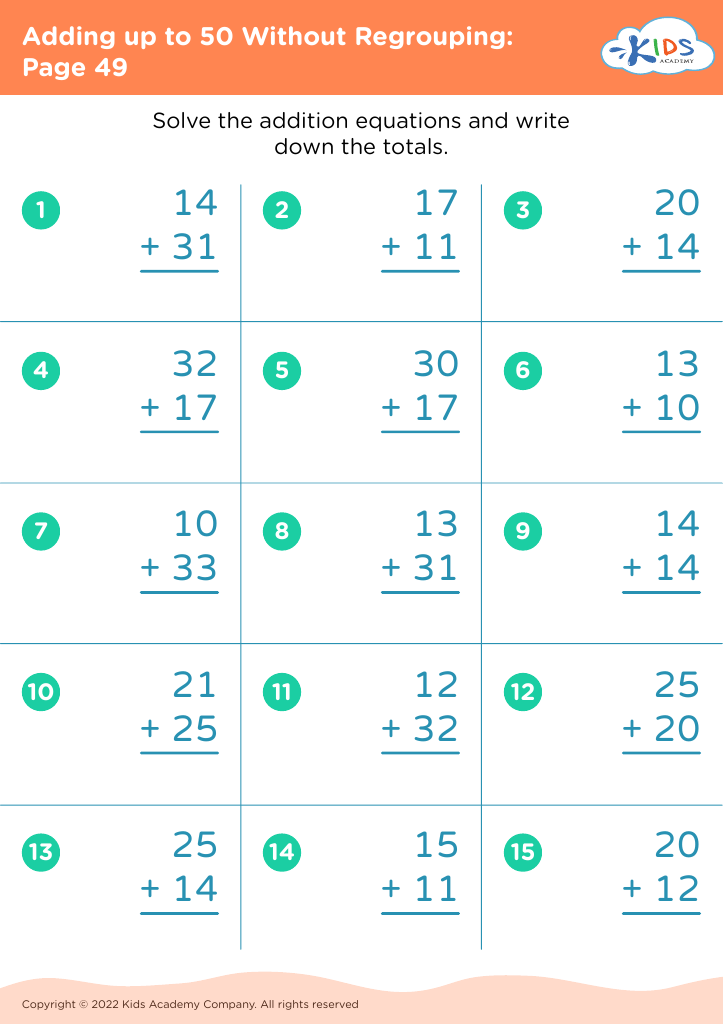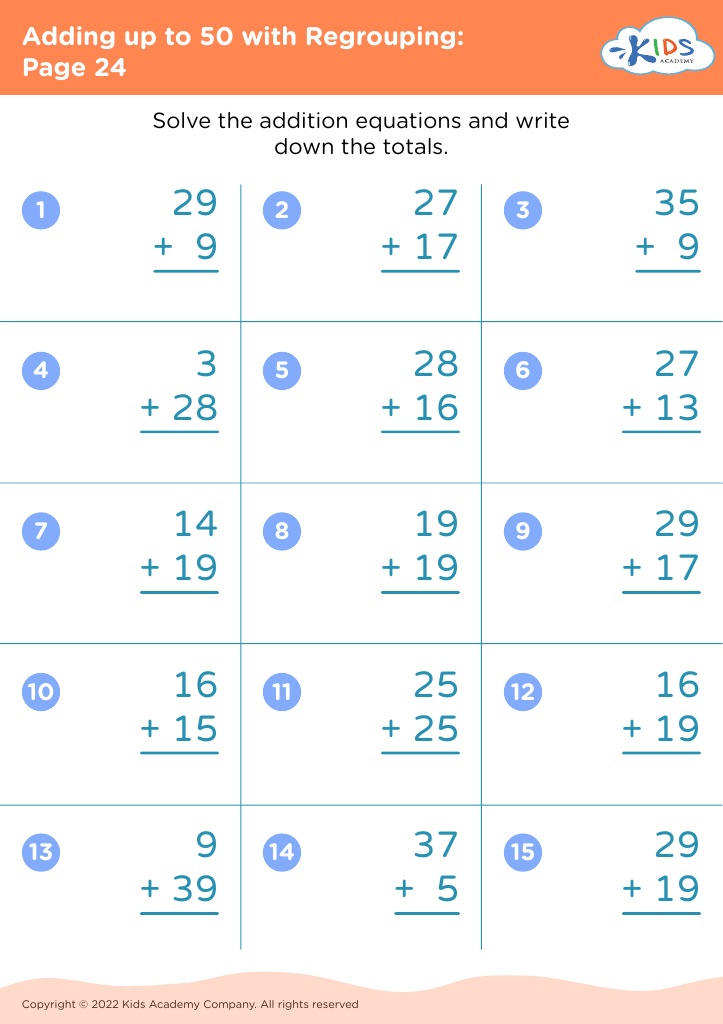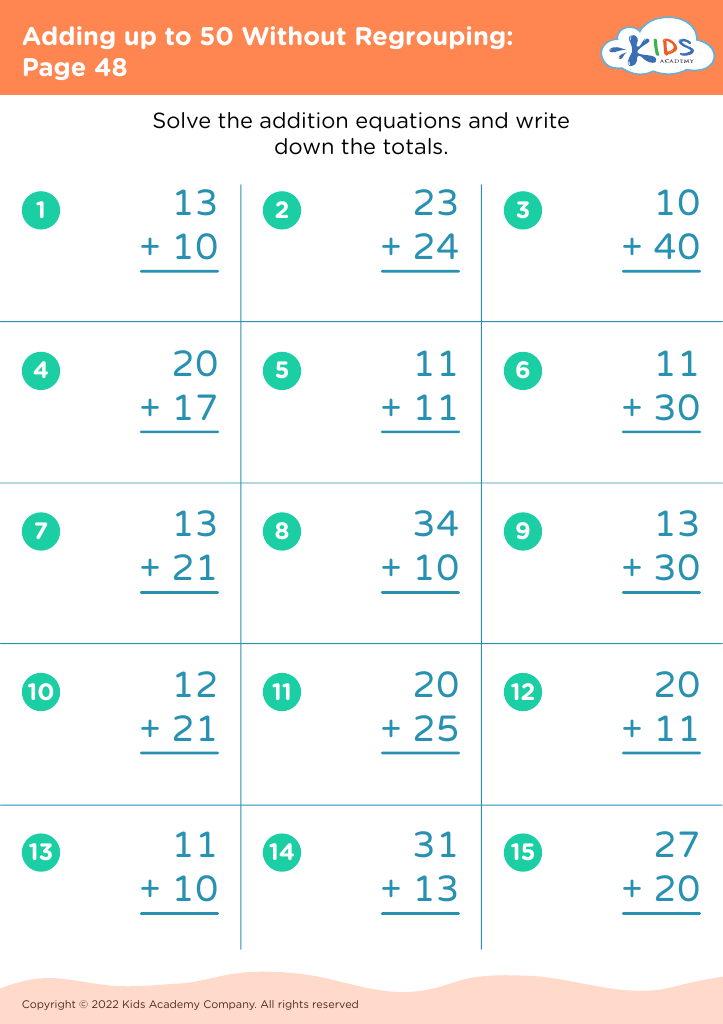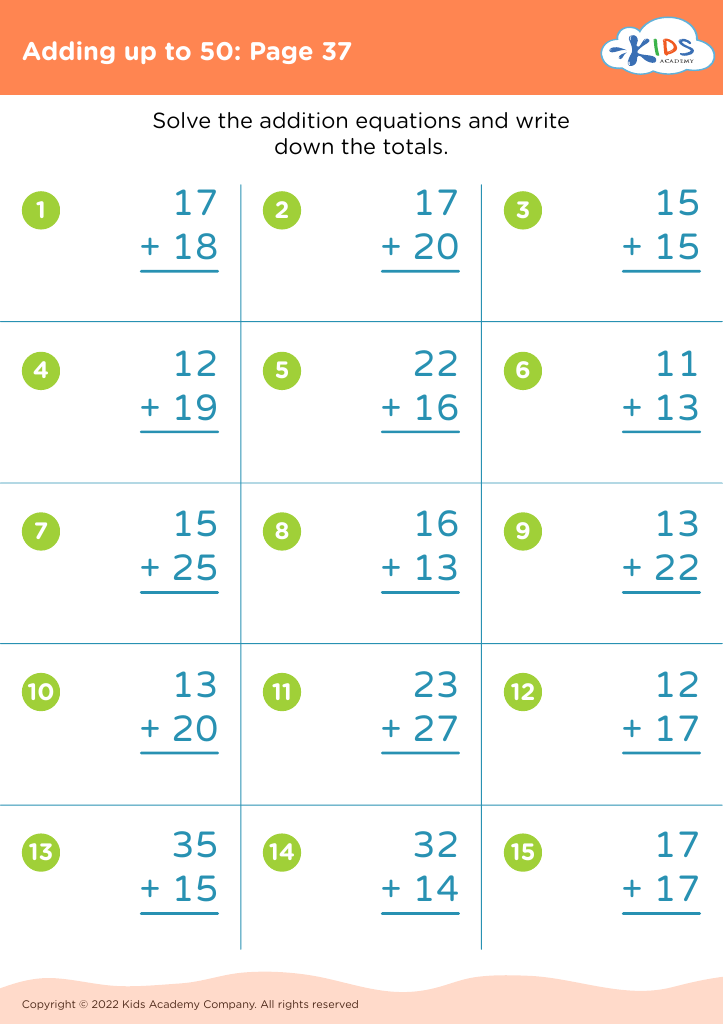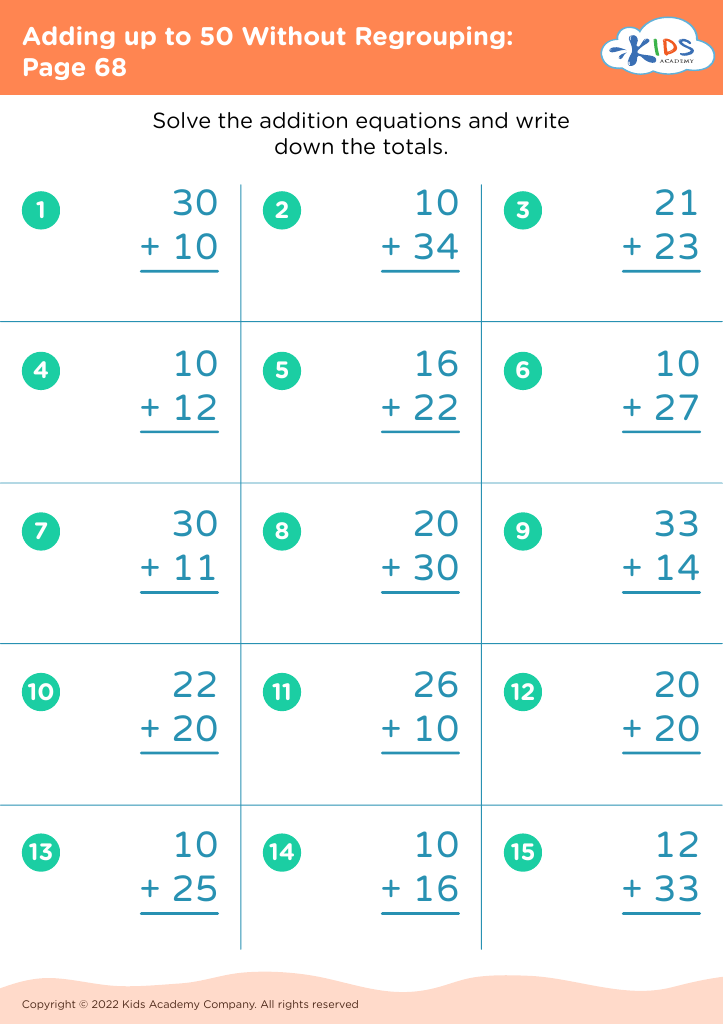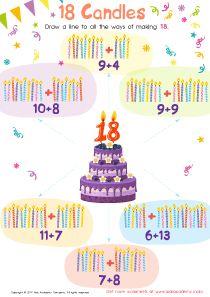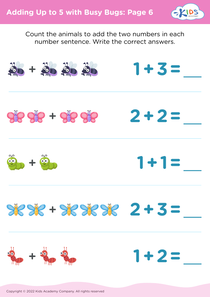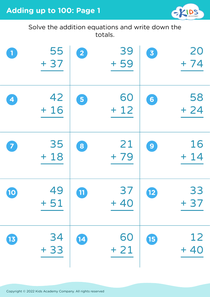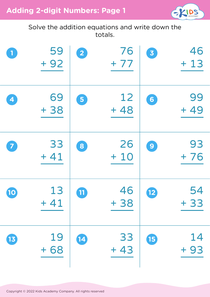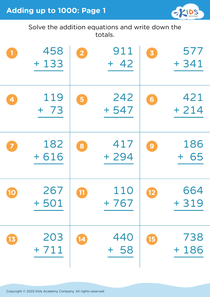Recognizing shapes Adding up to 50 Worksheets for Ages 5-7
8 filtered results
-
From - To
Discover engaging "Recognizing Shapes: Adding up to 50" worksheets crafted for children aged 5-7. Designed to blend fun with foundational math skills, these worksheets help young learners identify shapes while practicing addition within 50. Each activity encourages problem-solving and critical thinking, making math both accessible and enjoyable. Perfect for classrooms or at-home learning, these printable resources support cognitive development and mathematical confidence. Utilize these expertly created exercises to enhance your child's learning journey and foster a love for math from an early age. Unlock the door to successful learning with our enjoyable and educational worksheets.
Parents and teachers should prioritize teaching children ages 5-7 to recognize shapes and add numbers up to 50 because these foundational skills are crucial for their cognitive and mathematical development. Recognizing shapes helps children understand and classify the world around them. This skill enhances their spatial reasoning, which is essential for later learning in geometry, science, and everyday problem-solving. Shapes also play a role in visual literacy, helping children to interpret various forms and patterns in their environment.
Adding numbers up to 50 fosters early numerical fluency and sets the groundwork for more complex mathematical concepts. This skill improves their number sense, making it easier for children to understand relationships between numbers, perform basic arithmetic operations, and grasp more advanced topics like multiplication and division later on. Early success in math boosts children's confidence and keeps them engaged, encouraging a positive attitude toward learning.
Both recognizing shapes and adding up to 50 are integral components of a holistic early education. They not only support academic success but also stimulate critical thinking and reasoning abilities. By nurturing these skills at a young age, parents and teachers equip children with essential tools they will use throughout their educational journeys and in everyday life.


